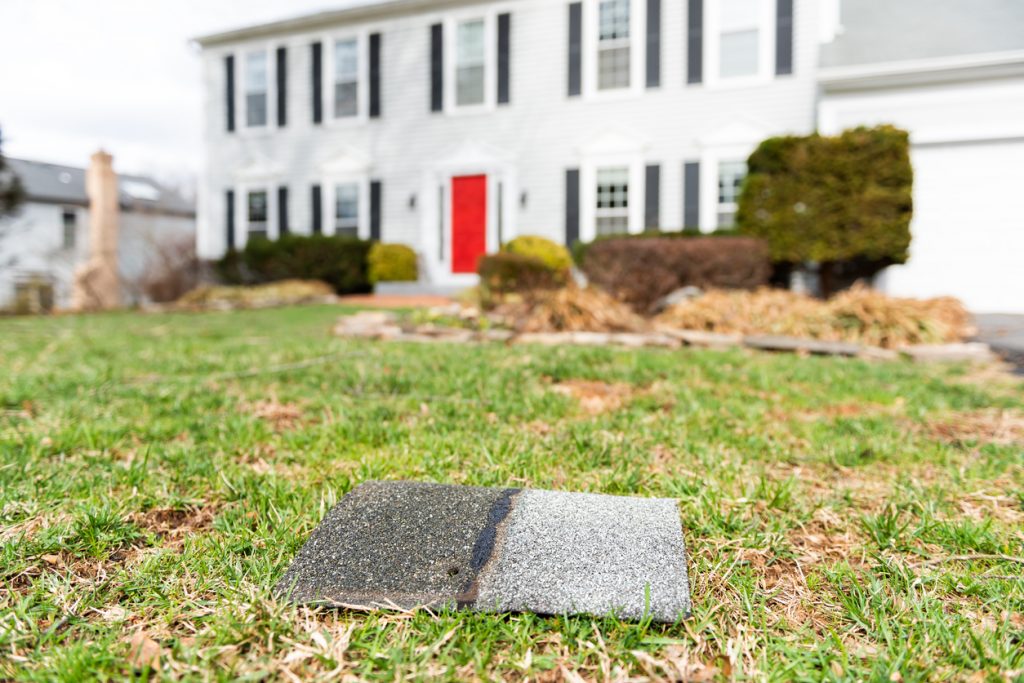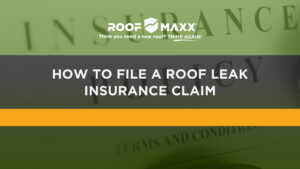Summary:
- All roofs will eventually need to be repaired or replaced, even with proper care. Asphalt shingles last around 20 years, while metal and slate can last for over 100 years.
- Watch for signs of wear like cracked shingles, leaks, broken flashing, moss, or a sunken roof—these are red flags that it’s time to replace or repair. Regular inspections can help catch these early, saving you money later on.
- Climate, installation quality, and maintenance significantly impact how long a roof installation remains intact. Clearing gutters, trimming nearby trees, and ventilating your attic properly can significantly extend the lifespan of most modern roofing materials.
- With Roof Maxx, you can extend the life of your asphalt roof by up to 15 years at a fraction of the cost associated with replacement. It’s an excellent way to stave off costly repairs and maintain the integrity of your roof.
Homeowners have many questions regarding maintaining their homes, and one of the most common is: How often should my roof be replaced?
Roofs need to be replaced approximately every 20 years, so there’s a good chance you will need to replace your roof yourself or have a professional do it at some point. The lifespan of your roof depends on a lot of factors, but the primary consideration is its material.
Below is a general guideline for each material’s estimated longevity and replacement timeframe:
- Asphalt Shingles: 20 years
- Wood Shake or Shingles: 30 years
- Metal: 40 to 70 years
- Slate, Concrete, or Clay Tiles: 50 to 100 years
But even if yours isn’t nearing the end of its expected lifespan, you may already need repairs for it, or a new one. Below is our comprehensive guide to answer—How often should I replace my roof?
Signs a Roof Needs to Be Replaced
One way to know if your roof needs replacing is to look closely at the structure. Watch out for signs of physical damage that tell you it’s time to install new roofing.
1. Cracked or Broken Shingles
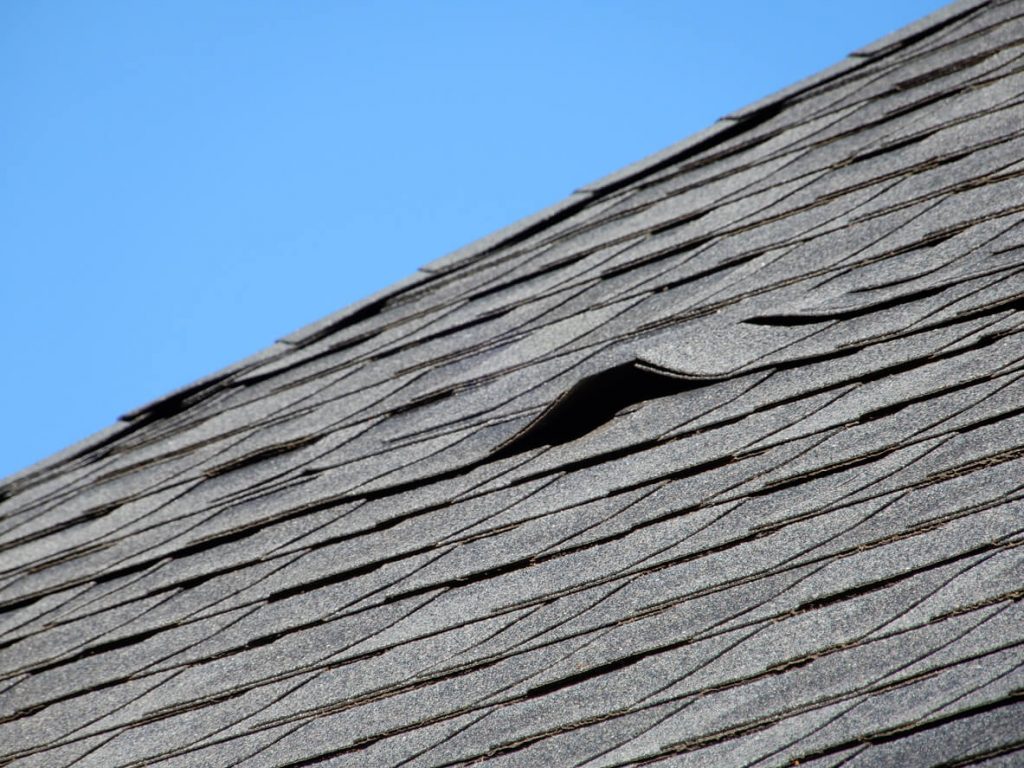
Shingle damage is a significant sign your roof needs to be repaired or replaced. Sometimes it can be obvious—maybe you’ll see shingles with missing pieces or chunks of debris washing into your gutters.
Other times, it can be more subtle. You may need to inspect your roof up close or have a professional do it for you, especially if you have a dangerously steep roof.
Cracked or broken shingles can result from extreme weather or regular wear and tear. Asphalt shingles contain oil that enables them to expand and contract with changes in temperature and humidity. Over time, exposure to sun, wind, and weather dries out your shingles, leaving them brittle and unable to function as they once did, which results in cracking and breaking.
2. Leaks
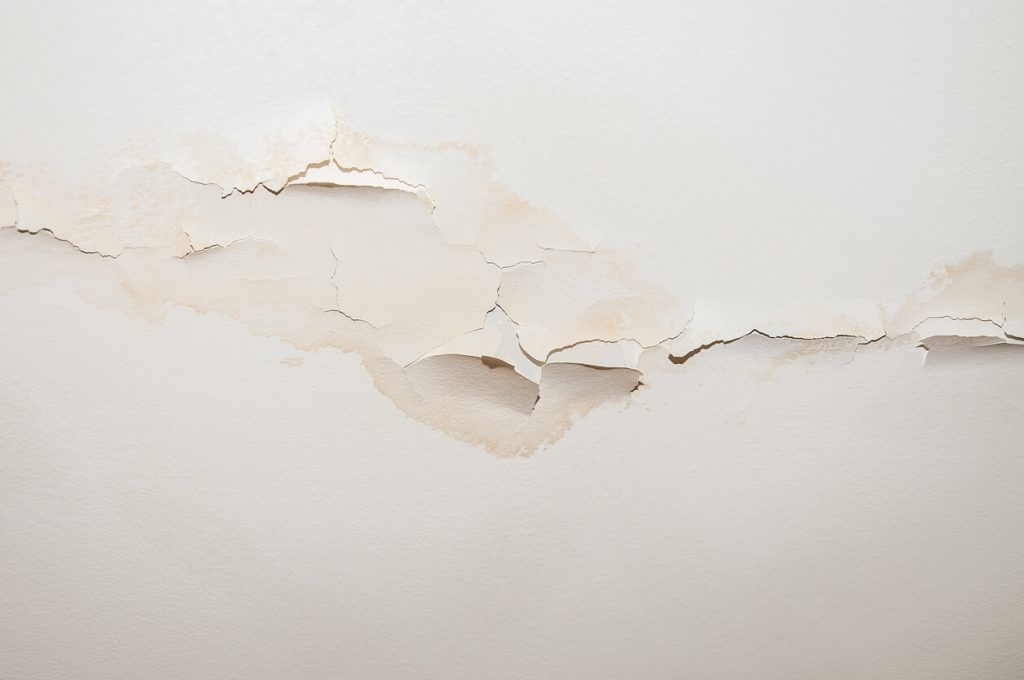
Leaks are another clear indication your roof needs to be replaced. They can be a sign of external damage, like from a fallen tree limb, or an indication of wider roof deterioration.
Whether your leak is in just one place or more widespread, you will likely need to contact a professional to inspect your roof and make the necessary repairs. The cost of roof repairs will depend on how extensive the damage is.
3. Flashing Is Breaking
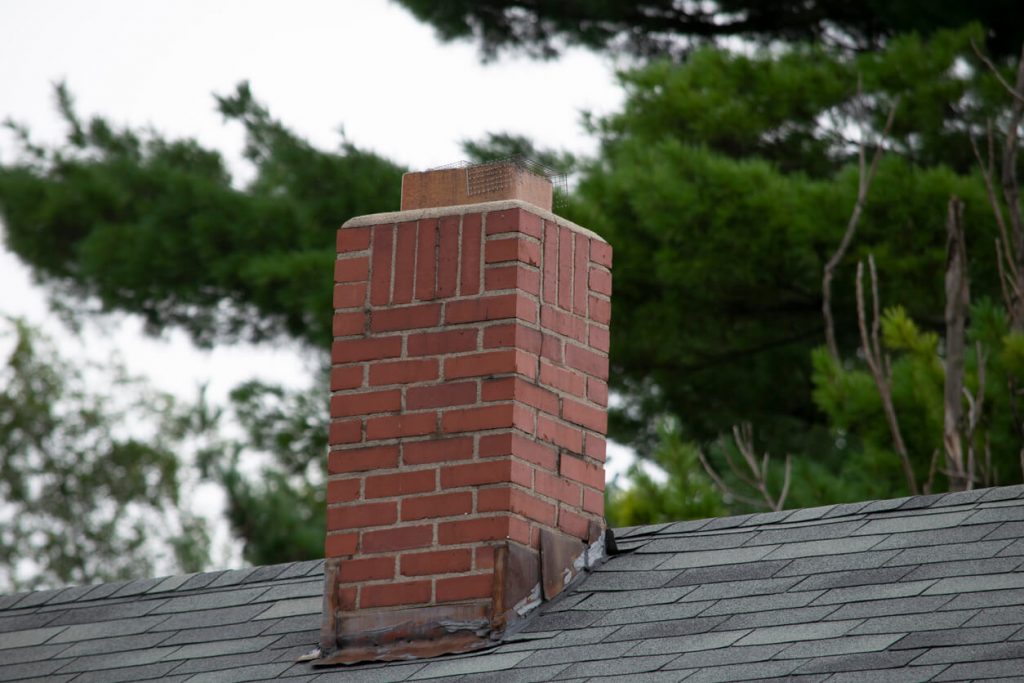
Roof damage isn’t just limited to the shingles. The flashing is the material used to connect your roofing to other parts of the roof, like vents, chimneys, or skylights. This material directs water away from the structure and onto the shingles to run toward the gutters.
If the flashing is breaking, water can get into the seam and under the roofing. This can lead to severe damage to the roof and the structure below. If you notice damage to your roof flashing, look into repairing it as soon as possible.
4. Moss Growth
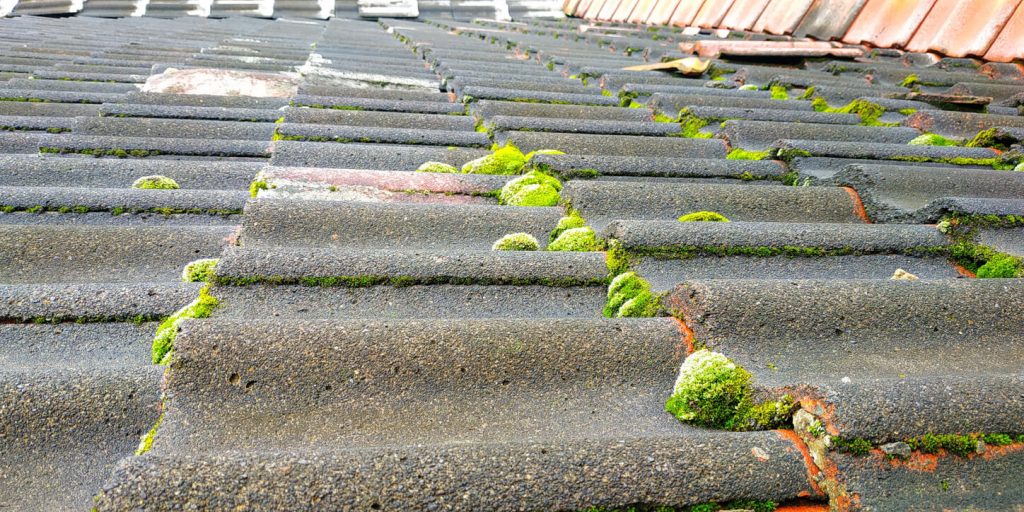
Like cracking shingles, moss growth can indicate a larger problem. If moss is growing on your roof, it could mean water is working into cracks and gaps—which means you could have significant damage.
Moss growth can also occur if your roof is shaded by overhanging objects like tree limbs, allowing moisture to stay on your roof longer and enabling the moss to thrive. That moss can trap even more moisture on your roof and lead to damage. It’s typically best to clear the shading limbs away from your roof. This helps prevent moss growth and can help you avoid damage from falling limbs.
5. Sunken Roof
This is a major sign of extensive roof damage. It can mean a more widespread failure of the roofing. A sunken roof typically includes more than just the shingles and likely involves the roof’s structure as a whole. If you see your roof sinking at all, you should contact a professional to take a look immediately.
Roof Age Matters
In addition to checking for signs of damage, consider the roof’s age. Even with routine maintenance and timely repairs, roofing naturally deteriorates with time, requiring a costly roof replacement.
The cheapest time of the year to replace a roof is in winter. Most roofing contractors consider it their slow season because of less work, especially in places with severe weather. During off-peak, you’re likely to get discounts or lower rates.
Find out when the roof was installed to determine if it’s nearing the end of its lifespan and due for replacement. A typical roof lasts 15 to 30 years, but this can significantly vary according to the material, maintenance, and surrounding conditions. You may need to contact the manufacturer or property’s previous owner to know the age.
Also, keep in mind that some roofing materials age faster than others and will require replacement sooner.
How Long Do Roof Materials Last?
Many homeowners ask, How often should a roof be replaced? Experts will tell you that roofing isn’t supposed to be changed out frequently. Some roofs last 30 years; others, shorter—the frequency of needing a replacement depends on several factors, including the type of material installed.
Asphalt
Asphalt shingles are the most commonly used roofing material and the least expensive. But their low price tag doesn’t necessarily mean you’ll need to replace them earlier. Their average useful life is 15 to 20 years and may extend to 30 years with proper upkeep, such as applying Roof Maxx.
Clay
Clay tiles are one of the hardiest roofing materials available, and it’s not surprising they are among the longest-lasting. Clay tiles can last up to 50 years and are best suited for hot, sunny climates. In addition to being resistant to weather, fire, and rot, they are also low maintenance.
Slate
If you have slate tiles for roofing, you might never have to consider how to prepare your roof for replacement. That’s because slate lasts 50 to 100 years, and manufacturers usually offer warranties ranging from 50 years to a lifetime. Like clay, slate is extremely durable and virtually fuss-free.
Metal
Metal is an increasingly popular choice for roofing—it’s resilient but not as expensive as clay and slate. Depending on the type of metal used and its thickness, a metal roof can last between 40 and 70 years. For example, steel and aluminum are good for 50 years, while zinc and copper will not require replacement for a century.
Other Factors to Consider
Sometimes, a simple wash is all that’s required to make an old roof appear like new again. Nevertheless, old roofs come with inherent dangers and should be replaced.
IMPORTANT:
Besides damage and age, other factors can impact its life expectancy as well. These include:
- Installation Quality: Improper installation shortens a roof’s expected lifespan, as mistakes might damage the material and structure.
- Environmental Conditions: Frequent exposure to UV rays, high winds, extreme temperatures, and heavy falling debris also reduce its useful life.
- Maintenance: With routine upkeep, you can detect damage early before problems worsen and require costly repairs or replacement.
Ways to Extend the Life of Your Roof
The average lifespan of a roof ranges between 15 to 30 years, but how long your roof will actually last depends on several factors. That’s why the question “How often should a roof be replaced?” doesn’t have a single, correct answer but rather a multifaceted one.
If you’re keen on making your roof last longer and delaying its full replacement, here are helpful tips for extending its lifespan.
1. Clear the gutters of dried leaves, twigs, and other debris to ensure water runoff drains away from the roof instead of pooling at the edges, causing moisture damage.
2. Trim nearby trees to keep overhanging branches away from the roof—weak limbs can fall on your roof during storms, and dried leaves can clog the gutters.
3. Keep your attic well-ventilated to ensure the air circulates properly.
4. Ensure your home’s insulation is up to standard, especially in the attic, to prevent elevated roof temperatures that can deteriorate the material faster.
5. Have a professional roofer inspect your roofing at least once a year to identify and address issues early.
6. Remove any debris on your roof regularly, particularly after a storm—anything left on the surface may eventually cause damage.
7. Scrub off moss and other growth on the roof right away. As with debris, they can lead to trouble.
8. Clear away ice dams and chunks of snow that may form on the roof, especially if you live in an area that experiences severe winter storms. Doing so ensures water runoff drains properly.
9. Fix roofing troubles immediately, such as cracked, loose, or missing shingles, before they become bigger issues, like widespread leaks.
Different Types of Metal Roofs vs. Shingle Roofing
How often a roof should be replaced is largely based on the material you have. Generally, a metal roof has double the lifespan of an asphalt shingle roof—40 years versus 20 years. Roofs made with zinc and copper can last even longer—up to a century with proper maintenance.
But despite a metal roof’s longevity, many homeowners still prefer asphalt shingle roofing for its ease of installation and affordability.
Plus, if homeowners take advantage of a roof restoration treatment, like what we offer at Roof Max, they can easily add as many as 15 years to their asphalt shingle roof’s lifespan, leaving little difference in the lifespan between a metal roof vs. a shingle roof.
Get Your Roof Rejuvenated Today!
Knowing how often to replace your roof can be tricky. It depends on many factors, including how old your roof is and how well it’s held up to the surrounding conditions.
Before replacing your roof, however, consider roof rejuvenation. Roof rejuvenation from Roof Maxx restores your asphalt shingles’ ability to stand up to the elements. One application of Roof Maxx instantly adds five years to the life of your roof.
Plus, Roof Maxx can return every five years for up to three applications, adding 15 more years of roof performance. The best part? An application of Roof Maxx costs just 15-20% of what replacing your roof would cost. You save thousands and keep your roof going strong.
Contact Roof Maxx today and get more years from your roof.
